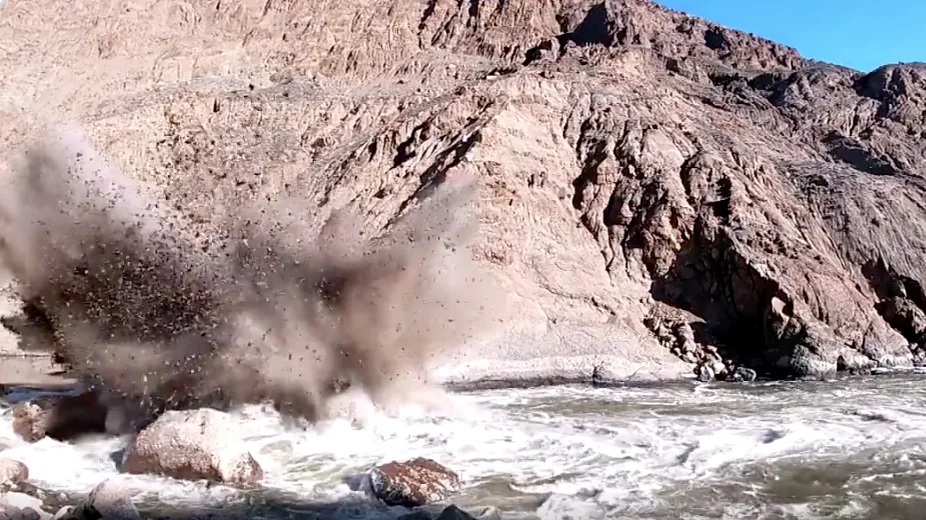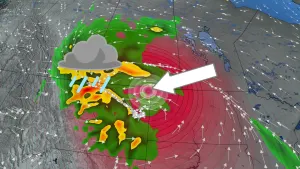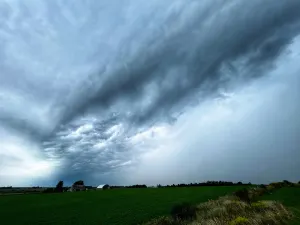
Successful blast removes part of Big Bar landslide obstructing salmon migration
The federal government has announced a successful initial blasting of the Big Bar landslide site.
The rock slide in 2019 blocked the migration of sockeye and chinook salmon swimming upstream to spawn.
Planned blasting took place on Feb. 18 to remove a large portion of bedrock extending into the river at the site of the slide.

Before and after images of the East Toe show the results of initial blasting at the Big Bar landslide site. (Fisheries and Oceans Canada)
Following the blast, there is a widened channel and more flow directed toward the east river bank, according to the provincial government.
It says no fish were identified in the area prior to the explosion, nor were any fish deaths detected.
SALMON STOCKS DROP OVER 4 MILLION
The landslide, which satellite imagery confirmed happened in October or November 2018, sent massive chunks of rock crashing into the river north of Lillooet.
It resulted in a five-metre high waterfall and an impassable obstacle for migrating salmon.
Late last year, the Department of Fisheries and Oceans said more than 275,000 salmon managed to get past the slide. Of those, about 245,000 passed through naturally, while others were transported to their spawning grounds by helicopter and other means.
In September, the federal department adjusted the expected number of returning Fraser River sockeye in 2019 to a little more than 600,000, down from an earlier projection of nearly five million.
In November, federal scientists said they feared the possible extinction of some salmon populations as a result of the slide.
Work to clear some of the slide is being carried out by Peter Kiewit Sons ULC.
The Omaha, Nebraska-based company was awarded the contract by the federal government in January.
The government says Kiewit is making progress on the construction of an overland road for heavy equipment, as well as the installation of a highline to facilitate site access.
Drilling is set to resume in preparation for a second blast in March, depending on the weather.
This article was originally published by CBC News









